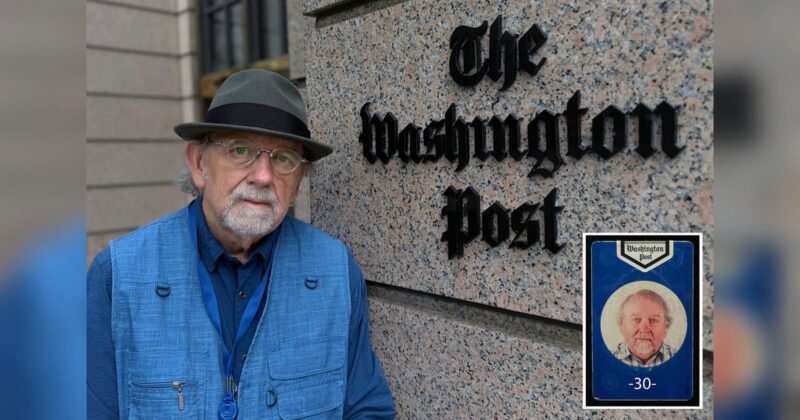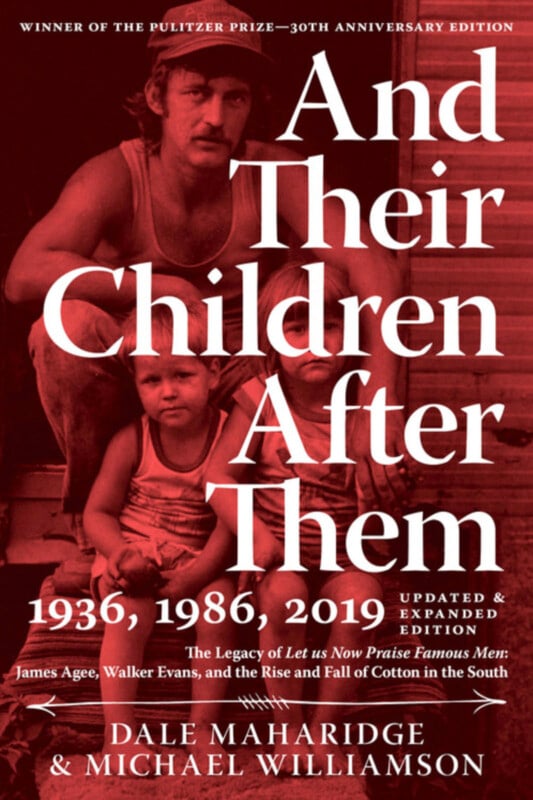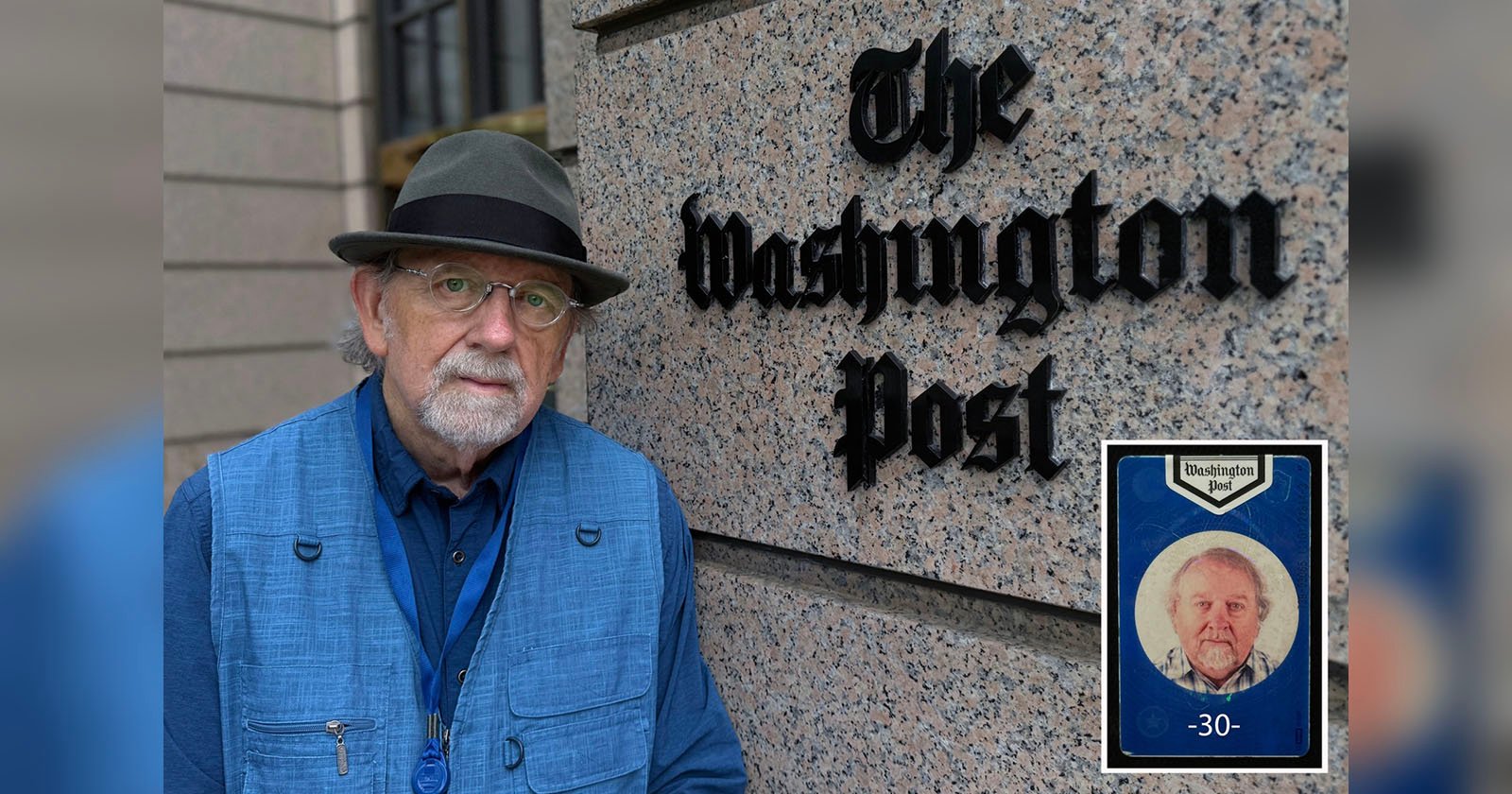 Photographer Michael S. Williamson
Photographer Michael S. Williamson
Pulitzer-prize winning photojournalist Michael S. Williamson has retired from The Washington Post after an incredible, impactful career. Williamson, orphaned at an early age, grew up in a series of foster homes and has been lauded throughout his career for his highly personal, powerful photographic work exploring poverty.
Williamson, born in 1957, has won two Pulitzer Prizes for his photography and been a finalist for another. Williamson’s first Pulitzer was won in 1990 alongside Dale Maharidge while both men worked at the Sacramento Bee. The duo won for the book And Their Children After Them, which Maharidge wrote and Williamson captured the photographs for.
The book picks up more than 40 years after the famous book Let Us Now Praise Famous Men by writer James Agee and photographer Walker Evans. In that book, Agee writes about and Evans photographs the lives of downtrodden, impoverished sharecroppers during the Great Depression, building upon Evans’ famous work for the Farm Security Administration.
Williamson and Maharidge tracked down the descendants of these families for their 1989 book, And Their Children After Them, to explore the generational impact of extreme poverty and the challenges each subsequent generation faced when trying to climb the socioeconomic ladder. An updated 30th anniversary edition of this Pulitzer-winning book was published in 2019.
 The 30th anniversary edition of And Their Children After Them
The 30th anniversary edition of And Their Children After Them
Maharidge and Williamson also worked together on award-winning books Journey to Nowhere: The Saga of the New Underclass and Homeland.
In 1993, just a few years after And Their Children After Them, Williamson became a staff photographer at The Washington Post, a position he held until his retirement on July 31, which Williamson shared news of on Facebook.
It was during his three-plus decades at The Washington Post when Williamson won his second Pulitzer prize and was a finalist for a third in 2014 for his series on food stamp recipients, for which writer Eli Saslow won the Pulitzer for explanatory journalism.
In 2000, Williamson, alongside Carol Guzy and Lucian Perkins, won the Pulitzer Prize in Feature Photography for their “intimate and poignant” images showing the tragic plight of refugees in Kosovo during the brutal and bloody Kosovo War in the late 1990s. The war, fought between the Federal Republic of Yugoslavia (now Serbia and Montenegro) and the Kosovo Liberation Army, led to the deaths of thousands and displaced millions.
Williamson has long been celebrated for his remarkable artistic eye, brilliant use of color, and hard-earned ability to see stories that many others cannot.
“He is a national treasure in the field of photojournalism,” long-time Director of Photography and editor Jim Colton wrote of Williamson in 2015.
In that 2015 interview, Williamson describes learning at an early age that, thanks to being moved around so much as a child, he was a gifted storyteller.
“I was really good at writing stories because I’d seen a lot of different states,” Williamson recalled.
“I’d seen a tobacco farm in Tennessee; the beaches of Virginia; California; Oregon; stayed with my grandfather in Springfield, Illinois, in a really cool house that was half underground. I lived in a housing project that was heavily minority. To me it wasn’t a big deal to be completely surrounded by diversity and non-English speakers… and extremely poor people. So I would write these stories and the teacher would say, ‘you know, you’re not a very good speller, (proof that I had hope as a photographer) but you got a way of turning a phrase there kid.’”
This storytelling ability grew during his school-age years, and Williamson even began writing for a local paper before he graduated high school. An All-American in cross country and track, Williamson could not shake journalism.
“It just scratched so many itches,” the award-winning photographer told Colton.
Photography quickly entered the picture and became one of Williamson’s primary storytelling tools. While writing copy part-time at the Sacramento Bee in the 1970s, the newspaper had just a single photographer, so they tasked Williamson with capturing the images for his own stories.
“So I went and bought a $50 Yashica rangefinder with a fixed 38mm lens… and I didn’t really know how to work it. So after the camera store loaded the film for me, I looked at the little instruction sheet that came with it that said, ‘Sunny day… a 500th at f/8… shade 250th… indoors at a 60th.”
On his way back to the office from the camera store, Williamson came across a large fire, so he shot “the fire in every conceivable way.”
“I’ll never forget the lab technician who told me after he processed the film that my proof sheet looked like a checkerboard! But there was at least one good frame… and it made the front page of the newspaper!” Williamson said. “And there it was; I had a huge front page photo from the very first roll of film I ever shot.”
Williamson quickly developed his photography skills behind the camera and in the darkroom, but throughout his acclaimed career, storytelling remained a central pillar. As did Williamson’s work on social justice, a passion he passed down to his two daughters.
“I’m interested in how people pursue that American dream. [People who] did everything right, did everything they were told to do, hard working clean living, and yet they’re not going to get a piece of the action beyond barely surviving,” Williamson told May-Ying Lam at The Washington Post in 2014.
Back in 2015, Williamson remarked to Colton that he believed, “from the bottom of his heart,” that he had the world’s greatest job.
“Nobody loves it like me! I’ve never been bored… and I love it! And I never forget how lucky I am,” Williamson said.
“People sometimes say when they leave that they had the best job in the world,” Williamson wrote on Facebook on Sunday, just days after his retirement. “In my case it was true.”
Image credits: Header photo shared on Facebook and Instagram by Michael S. Williamson

